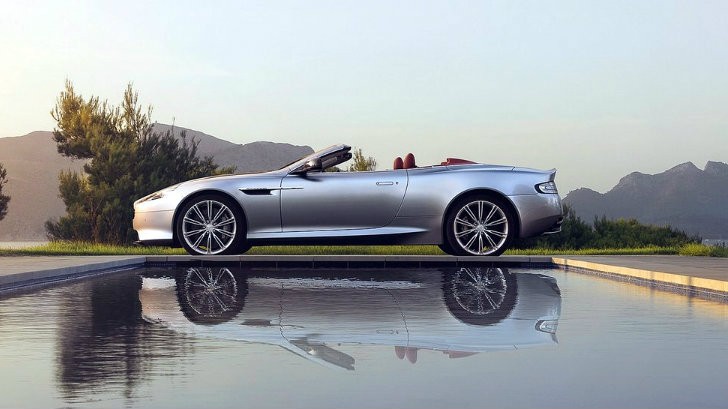Great Britain's most loved sports car manufacturer is currently working on an all-new platform, which will replace the aging VH architecture. The new platform will first debut on the next-gen DB9 grand tourer sometime in 2016.
The brand's chief financial officer declared recently, when Aston announced its 2013 financial results, that: "We are engineering a completely new architecture and technologies to ensure that our next generation of sports cars is at the forefront of design, performance and technology. The strategic partnership with Daimler AG will bring with it cutting edge electrical and electronic expertise, and the shared development of worldclass bespoke V8 powertrains."
Presently, the only naturally aspirated AMG-powered Mercedes-Benz in production is the SLS range (which will be killed off in June 2014). All other AMG powerplants benefit from turbocharging nowadays, even the V12 that powers the Pagani Huayra, so it's very likely that Aston Martin models will go turbo in the near future as well.
Ferrari and Maserati already made a first step in this direction. The all-new Ferrari California T makes use of forced induction in the form of a 3,855cc V8 delivering 560 horsepower and 557 lb-ft (755 Nm) of torque. Maserati's Ghibli and Quattroporte saloons are also powered by twin-turbocharged mills with six or eight cylinders.
By reasonable assumption, the 2016 DB9 will be powered by a twelve-cylinder twin-turbo mill. The yet-to-be-confirmed next generation V8 Vantage will likely go turbo as well, adopting the a bespoke version of the 4.0-liter twin-turbocharged V8 which will power the 2015 Mercedes-Benz C63 AMG.
Engines, transmissions and electrics aside, the chassis and bodywork of the future DB9 and V8 Vantage will be developed in-house by Aston Martin. Although no specific details are available at the moment, the engineers will most probably use their expertise in bonded aluminum structures to keep the weight low and rigidity levels high.
What's your opinion on the future of the British marque? Is turbocharging a 'yay' or a 'nay' for Aston Martin?
Presently, the only naturally aspirated AMG-powered Mercedes-Benz in production is the SLS range (which will be killed off in June 2014). All other AMG powerplants benefit from turbocharging nowadays, even the V12 that powers the Pagani Huayra, so it's very likely that Aston Martin models will go turbo in the near future as well.
Ferrari and Maserati already made a first step in this direction. The all-new Ferrari California T makes use of forced induction in the form of a 3,855cc V8 delivering 560 horsepower and 557 lb-ft (755 Nm) of torque. Maserati's Ghibli and Quattroporte saloons are also powered by twin-turbocharged mills with six or eight cylinders.
By reasonable assumption, the 2016 DB9 will be powered by a twelve-cylinder twin-turbo mill. The yet-to-be-confirmed next generation V8 Vantage will likely go turbo as well, adopting the a bespoke version of the 4.0-liter twin-turbocharged V8 which will power the 2015 Mercedes-Benz C63 AMG.
Engines, transmissions and electrics aside, the chassis and bodywork of the future DB9 and V8 Vantage will be developed in-house by Aston Martin. Although no specific details are available at the moment, the engineers will most probably use their expertise in bonded aluminum structures to keep the weight low and rigidity levels high.
What's your opinion on the future of the British marque? Is turbocharging a 'yay' or a 'nay' for Aston Martin?

